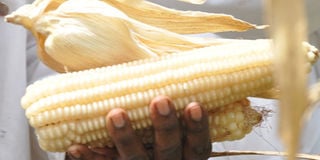Prime
Harmonised policy issues to dominate grain summit

Uganda has become an important player in the grain value chain especially maize, producing over one million tonnes. PHOTO/ FILE
What you need to know:
Uganda and Kenya have had trade disputes over substandard grain products, which have cost both the farmers and dealers millions of shillings.
KAMPALA. Grain value chain players will convene in Kampala for the 10th East African Grain Council Summit – the second one in Uganda since 2011, in October this year. Key on the agenda is to push for harmonized policies on standards and installing a structured trade order.
Uganda and Kenya have had trade disputes over substandard grain products, which have cost both the farmers and dealers millions of shillings.
Gerald Masila, the executive director of Eastern Africa Grain Council (EAGC), said, “The biggest problem to grain trade in the region is non uniform standards which have sparked off trade wars among the member states.”
Challenges
In 2020, East Africa member states agreed on acceptable moisture levels in grains and cereals, though implementation has been difficult.
Masila asserts, “The problem is that whatever is rejected in Kenya has a local buyer ready to take it up and in doing so, it becomes hard for farmers and traders to conform to the approved standards because they know they will always find a buyer.”
Over the past 10 years, Uganda has become an important player in the grain value chain especially maize, producing over one million tonnes – thanks to government interventions.
However, there are no structured trade standards for the dealers as Emmanuel Asiimwe, a director at the regional grain council notes.
“If you look at how grain trade is carried out in Uganda and the region, there is no structure. Yet commodity trade internationally is structured for example gold, soybean among others.”
Lack of structures and standards make it difficult to acquire financing.
“These commercial loans we see are not tailored for grain production because it is hard for financial institutions to predict what is going on in the market,” Asiimwe explains.
Asiimwe says, “As players in the agricultural value chain we can longer push the issue of climate change under the carpet. It will feature during the October summit.”
But Asiimwe says government should invest heavily in post-harvest facilities.
Climate change: Biggest agricultural threat
The biggest threat to agriculture going forward is climate change. The unpredictable weather patterns have seen farmers counting their losses while consumers paying in terms of high commodity prices.




